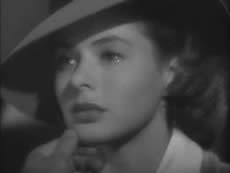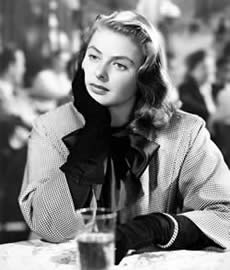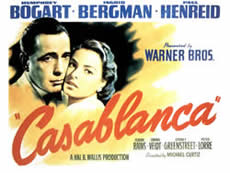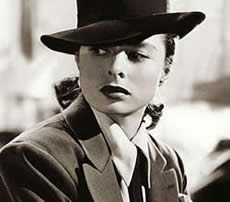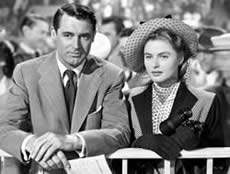USA PEOPLE SEARCH BY NAME!
- ❖ Current Address
- ❖ Phone Numbers
- ❖ Criminal Records
- ❖ Public Records
- ❖ Neighbors
- ❖ People's Age
- ❖ Property Ownership
- ❖ And Much More
Fri, 29 Nov 2013
How Ingrid Bergman Became the Ideal of American Womanhood
Seldom do we see a title so aptly describe a celebrity as the one bestowed by the St.James Encyclopedia of Popular Culture to movie icon Ingrid Bergman as "The ideal of American Womanhood". But how really did Ingrid Bergman Became The Ideal of American Womanhood?
Ingrid Bergman Was A Natural Beauty
She was a Swedish actress, whose rise to Hollywood fame came when producer David O. Selznick brought her to America to star in the movie "Intermezzo: A Love Story" in 1939. She became an instant hit with the American movie audience with her exceptional grace and beauty, bringing to the screen a "Nordic freshness and vitality".
In the Hollywood movie industry she is considered to be the most strikingly and naturally beautiful women to ever appear on screen.
Ingrid Had Integrity
Hollywood wanted her to be more in the "Hollywood style" and wanted her to change her name, her eyebrow, to change her hair, her teeth.
But Ingrid answered, "My name is Ingrid Bergman. And I am going to keep my name. These are my eyebrows, and this is my mouth, my teeth, my face. You have brought these teeth, these eyebrows, this face and my name over to your country and to Hollywood. And if you're not pleased I'm perfectly willing to leave. I wash my face with soap and nothing else. Take it or leave it".
She refused to please Hollywood and at her first screen test she didn't want to where makeup. It was then people in Hollywood saw that she was magic, a natural beauty whose face they decided should be untouched.
The Ideal of American Womanhood
She shunned Hollywood make-up artists for fear of turning her into someone she is not. And her natural good looks proved to be her selling point, aside having fine acting skills. The American movie goers quickly recognized her to be one of their own, having none of the synthetic Hollywood glitter. But her role in the classic movie Casablanca in 1942 and subsequent roles as a nun in The Bells of Saint Mary's in 1945 and a saint in Joan of Arc in 1948 catapulted her to superstardom.
Ingrid Bergman Became The Ideal of American Womanhood and the American audience bestowed upon her the kind of love and admiration quite unmatched before or since. The 1940's proved to be her banner years with starring roles in Hollywood classics such as:
- "Casablanca" in 1942
- "For Whom the Bell Tolls" in 1943
- "Gaslight" in 1944
- "The Bells of Saint Mary's" in 1945
- Alfred Hitchcock's "Spellbound" in 1945
- "Notorious" in 1946
- "Under Capricorn" in 1949
- "Joan of Arc" which was an independent production in 1948
Ingrid Bergman And Roberto Rossellini
Ingrid Bergman's acting career first started out Sweden and other European countries before her big break in Hollywood. She decided to go back to her European acting roots when she saw a movie by Italian director Roberto Rossellini and sought him soon afterwards for a movie project. She was cast by Rosellini in his film "Stromboli" in 1950 but the two fell in love while filming the movie.
They both were already married at the time and soon, public outrage ensued when the affair broke out. The strong outburst by Bergman's fans only showed how they feel about the woman whom they put in the highest esteem only to fall down, shattering her saintly image and then replaced with a perception of evil and deceit. Bergman made a Hollywood hiatus and remained in Europe, acting in films done mostly by Rosellini.
Ingrid Returned to Hollywood
She made a triumphant Hollywood comeback in 1956 with the highly successful film "Anastasia", earning her the Academy Award for the second time in her career and more importantly, forgiveness of her fans. She continued acting in films and in television until her death on her 67th birthday in 1982 after an eight-year battle with cancer.
Final Role
Her final role was a portrayal of former Israeli Prime minister Golda Meir in the television mini-series, "A Woman Called Golda". Golda Meir was an exceptionally strong-willed woman and none could have made a more inspiring portrayal than Ingrid Bergman who played the role while already suffering the effects of her illness. She frequently fell ill while filming but she rarely showed it nor complain. Bergman won her second Best Actress Emmy Award for this role.
But her award was given posthumously because she died four months after filming. Her daughter Pia received the trophy amidst a long standing ovation from the crowd.
Read:
The Enviable Career of Audrey Hepburn
Child Star Mara Wilson - What Is She Doing Today?
Meg Ryan's Filmography and Charm
Fit for Fits: The Howard Stern Show
Fawlty Towers - One Of The Funniest Sitcoms Ever
David Letterman's Late-Night Legacy
John D. Rockefeller And His Million Dollars Legacy
Henry Ford Started His Career As An Engineer For Thomas Edison
Christiane Amanpour's Career
Babe Ruth - A Baseball Legend
